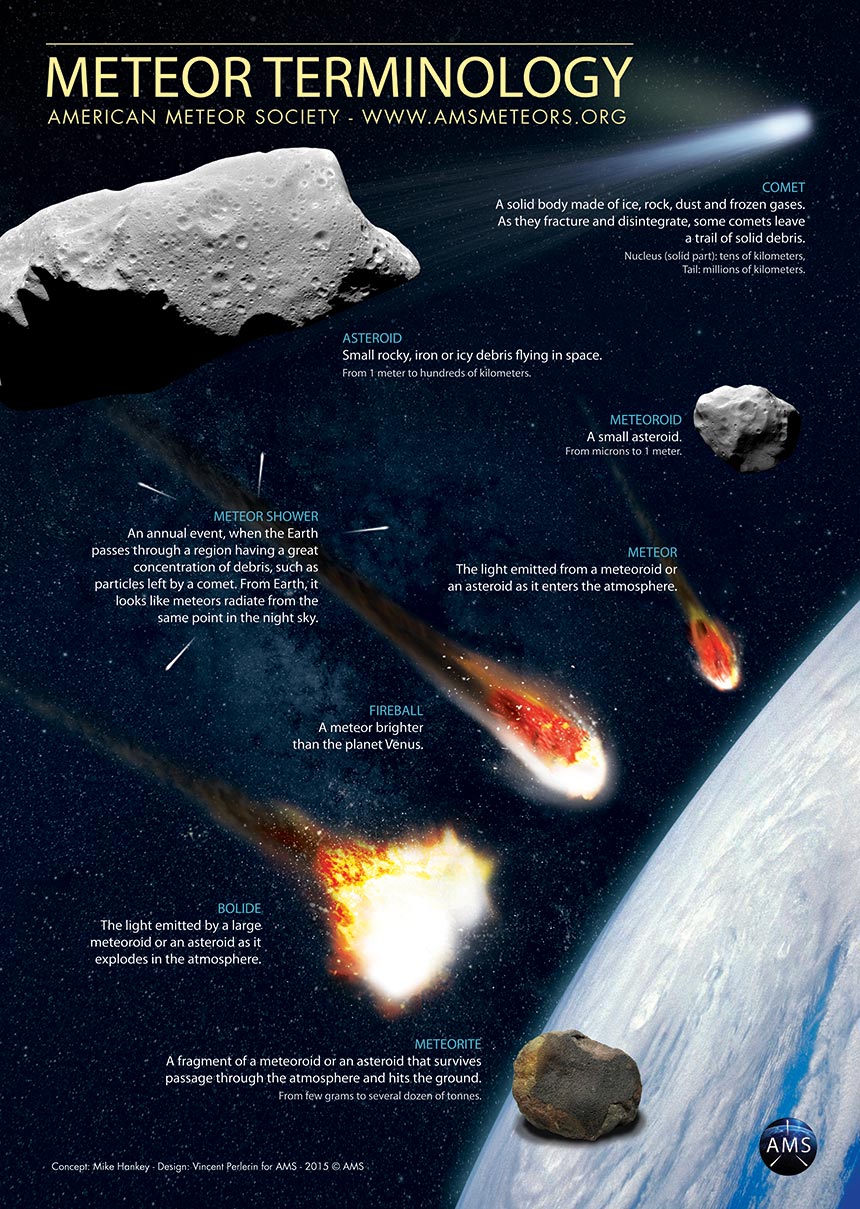
Exploring the Vast Realm of Meteoroids: Typical Size Ranges and Cosmic Intruders
Meteoroids, often overlooked cosmic entities in the vast expanse of the universe, hold a fascinating place in our understanding of celestial bodies and their interactions with Earth’s atmosphere. These small rocky or metallic fragments, which roam the space beyond our planet, come in a variety of sizes, shapes, and compositions. In this comprehensive article, we will embark on a journey to explore the typical size range of meteoroids, shedding light on their origins, impacts, and the essential role they play in our cosmic neighborhood.
Defining Meteoroids
Meteoroids are celestial objects that travel through space, ranging in size from tiny grains of sand to much larger rocks. These objects are typically composed of rock, metal, or a combination of both. What differentiates meteoroids from other celestial bodies is their smaller size and the fact that they are not bound by gravitational forces to any celestial body, such as a planet or moon. Instead, they follow their own paths through the cosmos.
The Size Spectrum: From Dust Grains to Boulders
Meteoroids come in a wide range of sizes, making it challenging to pinpoint a single, definitive size for them. They are often categorized into several size classes based on their dimensions:
1. Micrometeoroids and Dust Grains
At the smallest end of the spectrum, we have micrometeoroids and dust grains. These minuscule particles can be as small as a grain of sand or even smaller. They are so tiny that they pose no threat to Earth’s surface, as they burn up entirely upon entering the atmosphere, producing faint streaks of light known as “micrometeor showers.”
2. Small Meteoroids
Small meteoroids are typically a few millimeters to a few centimeters in size. When they enter Earth’s atmosphere, they create bright streaks of light called “shooting stars” or “meteors.” These meteors are often visible from the ground and are a common sight during meteor showers.
3. Medium-Sized Meteoroids
Meteoroids in the medium size range can measure anywhere from a few centimeters to several meters across. These objects can produce more substantial and long-lasting meteor trails when they enter the Earth’s atmosphere. If they survive the journey through the atmosphere and reach the Earth’s surface, they are referred to as meteorites.
4. Large Meteoroids
Large meteoroids can be several meters to tens of meters in size. When these sizable objects enter the Earth’s atmosphere, they can create incredibly bright fireballs or bolides. Some well-documented meteorite falls, such as the Tunguska event in 1908, involved the explosion of large meteoroids in the atmosphere, causing significant damage on the ground.
5. Enormous Meteoroids
The largest meteoroids can be hundreds of meters or even kilometers in diameter. These colossal objects are extremely rare, and when they enter the Earth’s atmosphere, they are often referred to as “asteroids.” Asteroids of this size can potentially have catastrophic consequences if they were to impact the Earth’s surface, as witnessed during the extinction event that wiped out the dinosaurs.
Origins of Meteoroids
Meteoroids originate from various sources within our solar system. The most common sources include:
- Asteroids: These are rocky or metallic objects that orbit the Sun and can break apart, producing meteoroids.
- Comets: Comets are composed of ice, dust, and rocky material. When they pass close to the Sun, they release dust and debris, which can become meteoroids.
- Lunar and Planetary Ejections: Impact events on celestial bodies like the Moon and Mars can eject rocks and debris into space, some of which may become meteoroids.
- Space Weathering: Over time, the surfaces of larger asteroids and rocky bodies can be weathered by exposure to solar radiation and impacts, producing smaller meteoroids.
Conclusion
Meteoroids, with their diverse size range and origins, are intriguing celestial travelers that constantly interact with Earth’s atmosphere. While the smallest meteoroids create the mesmerizing streaks of light we observe during meteor showers, larger ones can pose significant threats if they collide with our planet. Understanding the typical size range of meteoroids not only enhances our comprehension of the cosmos but also contributes to the field of planetary defense, as scientists and astronomers work diligently to track and monitor these cosmic intruders, ensuring the safety of our planet and its inhabitants.

